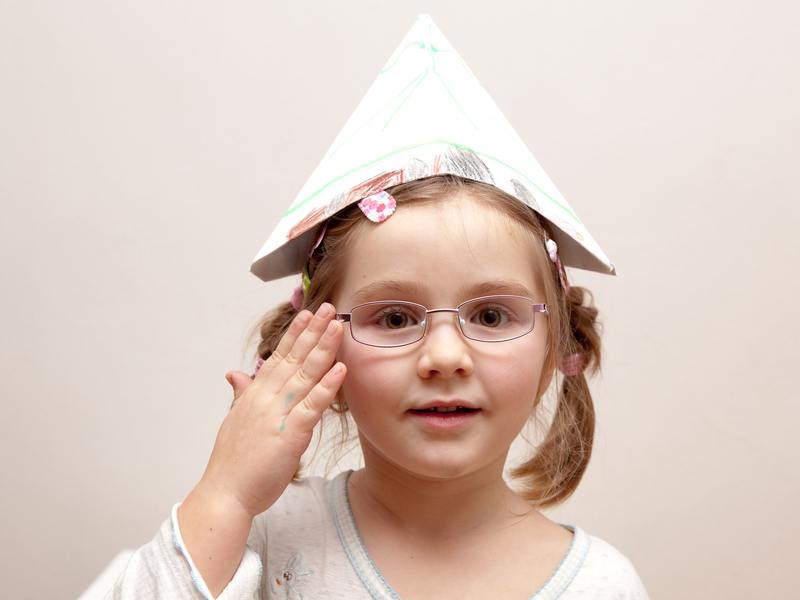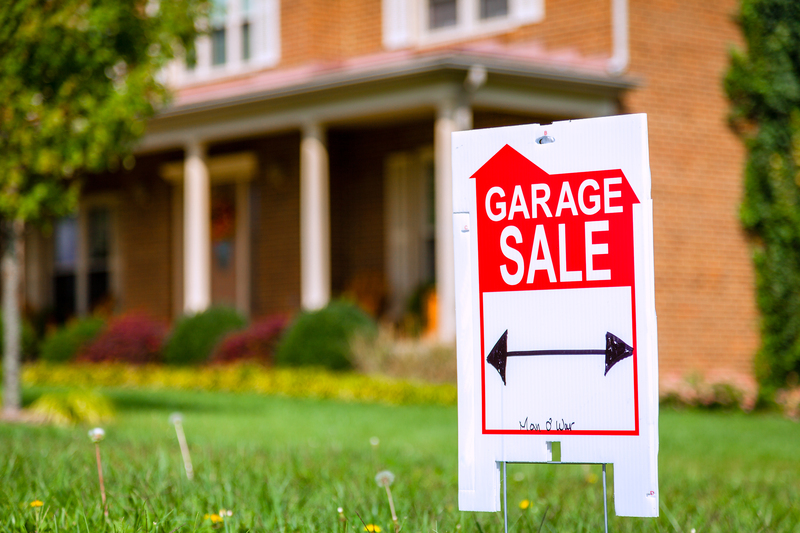Sustainable Upcycling: Creative Ways To Refresh And Reuse Household Waste
In a world increasingly dominated by consumerism and fast living, sustainability has become a critical consideration for environmentally conscious individuals. One effective approach to sustainability is through upcycling--transforming waste materials or unwanted products into new materials or products of better quality or for better environmental value. By engaging in sustainable upcycling, not only do we divert waste from landfills, but we also discover innovative ways to breathe new life into ordinary household items. This guide explores creative ways to refresh and reuse household waste, offering inspiring ideas and practical advice for anyone looking to join the upcycling revolution.
What Is Sustainable Upcycling?
Upcycling is more than just a trendy DIY movement--it's a necessary shift towards a greener, cleaner, and more responsible lifestyle. Unlike recycling, which often breaks down materials into their basic form, upcycling repurposes waste without degrading the quality of the original materials. The process aims to reduce landfill waste, conserve resources, and create unique, functional, and often beautiful items that tell a story.
Benefits of Upcycling for a Sustainable Lifestyle
- Reduces landfill waste: By finding new uses for household items, less material ends up polluting landfills.
- Conserves resources: Upcycling reduces the demand for new raw materials, lowering your environmental footprint.
- Promotes creativity: Upcycling encourages creative thinking and problem-solving.
- Saves money: Repurposing existing household waste often means spending less on new products.
- Encourages mindful consumption: Upcycling cultivates a greater awareness of what we buy, use, and discard.

Common Household Items Perfect For Upcycling
Many everyday objects can be easily transformed for new purposes. Look around your home, and you'll likely see many candidates for upcycling, including:
- Glass jars and bottles
- Old clothing and textiles
- Plastic containers
- Cardboard boxes and tubes
- Furniture and wooden pallets
- Electronic waste
- Metal cans
- Books, magazines, and newspapers
It's astonishing how much potential lies within what we often consider rubbish!
Creative Ways To Upcycle Household Waste
1. Turning Glass Jars into Home Decor
Glass jars, such as those from sauces, jams, or pickles, can be upcycled into beautiful and practical household items:
- Candle holders: Place tea lights or small candles inside clean jars and decorate the exterior with paint, twine, or washi tape. These make charming centerpieces for any occasion.
- Storage containers: Use jars to store pantry staples like rice, lentils, or spices. Label and stack them for a neat and organized kitchen.
- Vases and terrariums: Larger jars can house fresh flowers or mini indoor plants, brightening up your living spaces.
2. Upcycling Old Clothes And Textiles
Clothing waste is a major environmental concern. Instead of discarding worn-out garments, consider these sustainable upcycling ideas:
- T-shirt tote bags: With just a few cuts and knots, turn an old t-shirt into a reusable shopping bag--no sewing required!
- Rag rugs or patchwork quilts: Cut fabric scraps into strips or squares, then weave or sew them into unique throws or rugs.
- Cleaning rags and dusters: Repurpose soft textiles as cleaning cloths, reducing the need for disposable wipes.
- Fabric planters: Line old jeans or canvas with plastic, fill with soil, and grow small herbs or flowers.
3. Breathing New Life Into Plastic Containers
Plastic packaging and containers are among the most persistent waste forms. Fortunately, they can be upcycled in creative ways:
- Desk organizers: Repurpose yogurt cups or shampoo bottles by cutting and decorating them as pen holders or organizers.
- Seedling starters: Use small plastic bottles or cups as pots for starting seeds indoors.
- Bird feeders: Create hanging bird feeders by cutting and painting plastic milk jugs or soda bottles.
- Vertical gardens: Mount several bottles to a wall or fence and use them as planters for herbs or succulents.
4. Cardboard Creations
Cardboard from packaging, shipping boxes, and rolls can become the building blocks for sustainable and functional upcycled projects:
- Organizers and trays: Cut and fold cardboard to assemble storage boxes for drawers or shelves.
- Kids' toys and playhouses: Build imaginative play items like castles, forts, or toy cars with paint and tape.
- Compost materials: Shred non-glossy cardboard to add carbon-rich "brown" material to your compost pile.
- Art canvases: Prime flat cardboard pieces to use as eco-friendly painting surfaces.
5. Repurposing Wooden Pallets and Old Furniture
Furniture and wooden pallets are sturdy materials perfect for sustainable upcycling:
- Outdoor furniture: With a bit of sanding and paint, pallets can become rustic coffee tables, benches, or garden sofas.
- Wall shelves: Repurpose drawers, cabinet doors, or planks as chic shelving units.
- Pet beds: Convert old drawers or crates into comfortable beds for cats or dogs by adding a cushion.
6. Reusing Metal Cans
Aluminum and tin cans are everywhere, especially in kitchens. Here's how to turn them into sustainable upcycled items:
- Planters: Clean cans make durable pots for herbs and flowers. Punch holes in the bottom for drainage.
- Lanterns: Decorate cans and punch holes in patterns to create lanterns for candles that give a cozy glow.
- Utensil holders: Cluster cans together and secure them for storage of utensils or craft supplies.
7. Transforming Paper, Books and Magazines
Printed materials are abundant in most households. Rather than tossing them out, give them a new lease on life:
- Paper mache art: Transform torn paper into bowls, masks, or sculptures with glue and creative flair.
- Decorative garlands: Cut colorful magazine pages into shapes and string them up as festive decor.
- Gift wrapping: Use old maps, sheet music, or book pages as unique and reusable wrap for presents.
- Bookmarks: Take sturdy magazine covers or pages and create distinctive bookmarks with added ribbons or charms.
How To Start Your Own Sustainable Upcycling Journey
1. Adopt a Mindful Consumption Mindset
Before overtly jumping into upcycling, start by re-evaluating your consumption habits. Buying only what you truly need minimizes waste in the first place, making sustainable upcycling even more effective.
2. Collect and Sort Materials
Dedicate a spot in your home for storing potential upcycling materials like jars, fabric scraps, or sturdy containers. Sort them according to material type and ensure they're cleaned and safe for reuse.
3. Gather Tools and Supplies
- Basic Tools: Scissors, glue, paint, brushes, a hot glue gun, sandpaper, and screwdrivers are good to have on hand.
- Decorating Materials: Think ribbons, stencils, eco-friendly paints, and natural dyes for creative embellishments.
4. Search for Inspiration
Browse sustainable upcycling tutorials and projects on platforms like Pinterest, YouTube, or eco-friendly blogs. Be inspired, but don't be afraid to innovate according to what you have at home.
5. Start Small and Scale Up
Begin with simple projects to build confidence and skills. Over time, attempt bigger transformations such as furniture makeovers or multi-material art installations.
6. Share, Swap, or Gift
Once you've created a few upcycled items, share your knowledge and creations with friends or family. Host a swap event or offer upcycled gifts for special occasions--the results are thoughtful, eco-friendly, and memorable.
Tips For Successful And Sustainable Upcycling
- Focus on quality: Choose durable materials and robust items that can withstand a second life.
- Safety first: Ensure all items are clean and safe, especially if they'll be used for food storage or children's toys.
- Embrace imperfection: Handmade upcycled items have character and may not look factory-perfect--that's part of their charm!
- Keep it eco-friendly: Avoid upcycling with materials that might release toxins (e.g., certain plastics or treated woods).
- Stay inspired: Challenge yourself with new projects and keep learning from other upcyclers' experiences.

Upcycling and Community Impact
Beyond personal household benefits, upcycling can foster community connections. Neighborhood "swap days", communal crafts, and local upcycling workshops build bonds and reduce collective waste. Moreover, teaching children about upcycling cultivates the next generation of environmentally responsible citizens.
Many social enterprises and small businesses have made sustainable upcycling their core. Supporting these initiatives further multiplies the positive impact on the planet and local economy.
Conclusion: The Future of Sustainable Upcycling
Upcycling is an inspiring way to participate in sustainable living. By refreshing and reusing household waste, we collectively cut down on landfill contributions, reduce the strain on our planet's resources, save money, and learn to look at everyday objects with new eyes. Every upcycling project--large or small--sends a message that waste isn't inevitable, and with some creativity, can become an opportunity for positive change.
Make upcycling a regular practice in your life and inspire others to do the same. Together, every household can contribute to a brighter, cleaner, and more sustainable future. So the next time you eye a discarded item, ask yourself: How can I refresh, reuse, or upcycle this into something extraordinary?
Sustainable upcycling begins at home--start your journey today!
